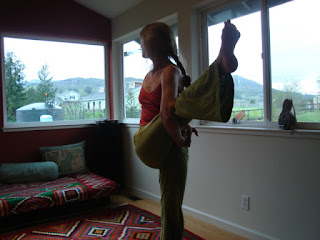
the Feldenkrais Method and real (organic) learning
Brain plasticity is a field that is discovering in research what Moshe Feldenkrais discovered empirically 50 years ago, as he went about "healing" knees that were almost "worthless" from years of brutal and overly competitive soccer playing. He discovered that it was not the "trying" to fix the knees that did anything, and was not just a "working on the knees" that did the trick. He discovered that what he wanted and needed to learn was how to move himself as a whole organism, in the easiest and most efficient way possible, which turned out to be the most pleasant and most powerful way.
In other words, he learned that he needed to re-learn how to move, and that this re-learning meant he needed
1) to use less effort,
2) to involve more of himself,
3) to move with a slowness that allowed him to notice small details he otherwise might miss
4) to try out various ways of moving, even some that were “worse,” because his brain needed
5) to have a variety of possibilities so learning could be a choice, rather than replacing the old rote movement with a new “better” movement
So this sort of learning was about involving our brains in a variety of possibilities, and from those possibilities discovering for itself more effective and pleasant and congruent patterns of movement.
What does that mean?
It means that when you have choices you aren’t stuck.
It means that if you want to move with ease, you have to have choices that you make, not “good ways of moving” that are imposed on you by some well meaning teacher. (Note how most yoga, Pilates, weight training, dance, singing, even music is taught: “This is the way to do it. Yes, you are doing it right.” Or, “No, you are doing it wrong.” Praising, scolding. Good, bad. High level, or maybe not so high level dog training. In this mode, this usual way of “teaching” that really has no “learning” going on, there is no experimenting, no discovering, no involving of our brains and our excitement to be creative and to discover.)
This sort of learning, called organic learning (as opposed to rote, academic, learn it the right way training disguised as learning), is exactly what we almost all, as humans, go through when we are small. To learn to crawl is not a falling into and acting out some internal “crawling” program.”
We, as babies, have to first learn to roll over, to raise our heads to the vertical.
We have to learn what a hand can do to hold up a shoulder, and to learn that we try all sorts of positions of hand forward, to the side, closer to the legs, closer to the middle, hand on its top, hand on side, hand on palm, fingers together, fingers in a fist, fingers down and palm up.
We are little scientists, or we are little artists, creating all sorts of possibilities and experiments in gravity. We are moving. We are falling. We are holding ourselves up. We are trying, good, worthless, okay, pretty good options, and discovering which of these, combined with what we are doing with our legs and chest and head and eyes and spine and ribs and pelvis, are going to get us moving across the yard or floor the most easily.
We don’t want to crawl.
We want to move.
We want to move because we want to get something, “over there” and crawling turns out to the be the way we get there.
So we learn. And are a different being, a different sort of human for having this learning. This is organic learning. This is our human birthright. This is what the Feldenkrais Method and the Anat Baniel Method tap into.
You, too, can join this fun.
I hope you do.
No comments:
Post a Comment